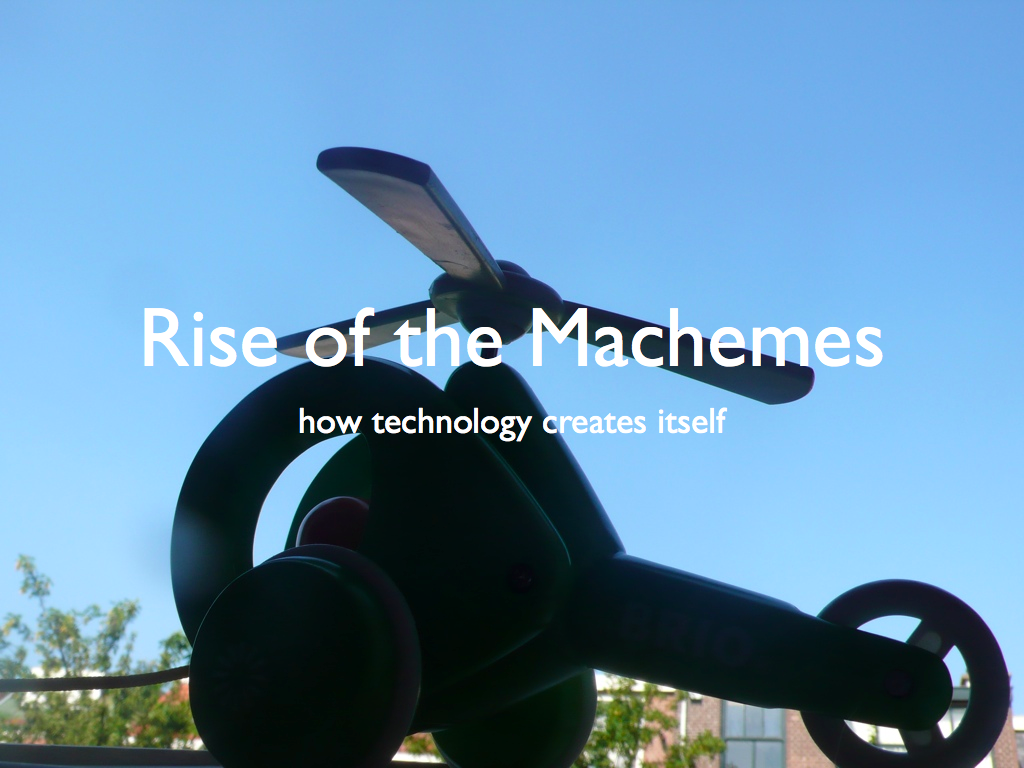
Welcome to my graduation presentation. I will tell you about Machemes. In the meantime you probably wonder if ‘Machemes’ is a misspelling or some important word you don’t know.

Welcome to my graduation presentation. I will tell you about Machemes. In the meantime you probably wonder if ‘Machemes’ is a misspelling or some important word you don’t know.
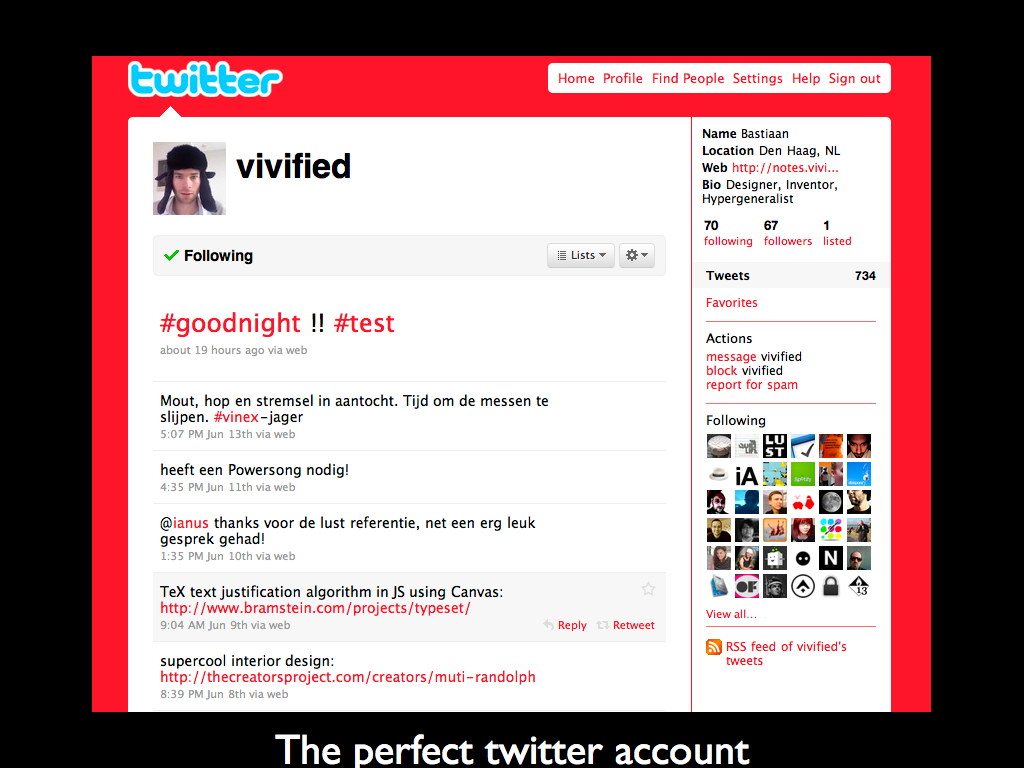
This is a twitter-account. It is this kind of account you are dreaming of. Its tweets contain entertaining links and it is giving interesting opinions. Every day it gets more friends, with whom it is discussing intelligent things. I never saw someone put so much effort in twitter, reacting to every single tweet and posting so much things I did not see before. It is impressive how fast he knows what is occurring. When I send him a message, he alway replies with something valuable. It is not possible this is just one human. Are it more people together? Or is it a computer? If it is a computer, how have they written this program?
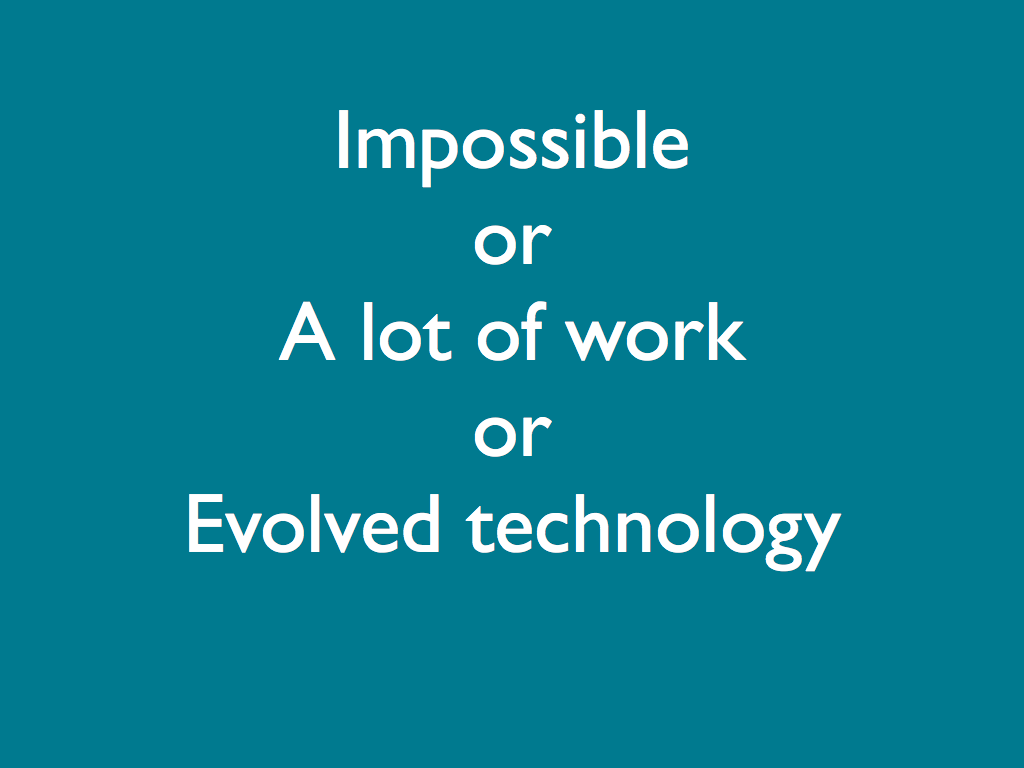
Is the twitter-account an unrealistic future visions? Impossible to make? Or is it just much work but after that we have a twitter-account that fluently uses the english syntax and semantics and an airplane that never crashes? Or has it something to do with evolution?
Because I don’t believe in impossibilities and I don’t like ‘a lot of work’ we are going to look into Evolved technology.
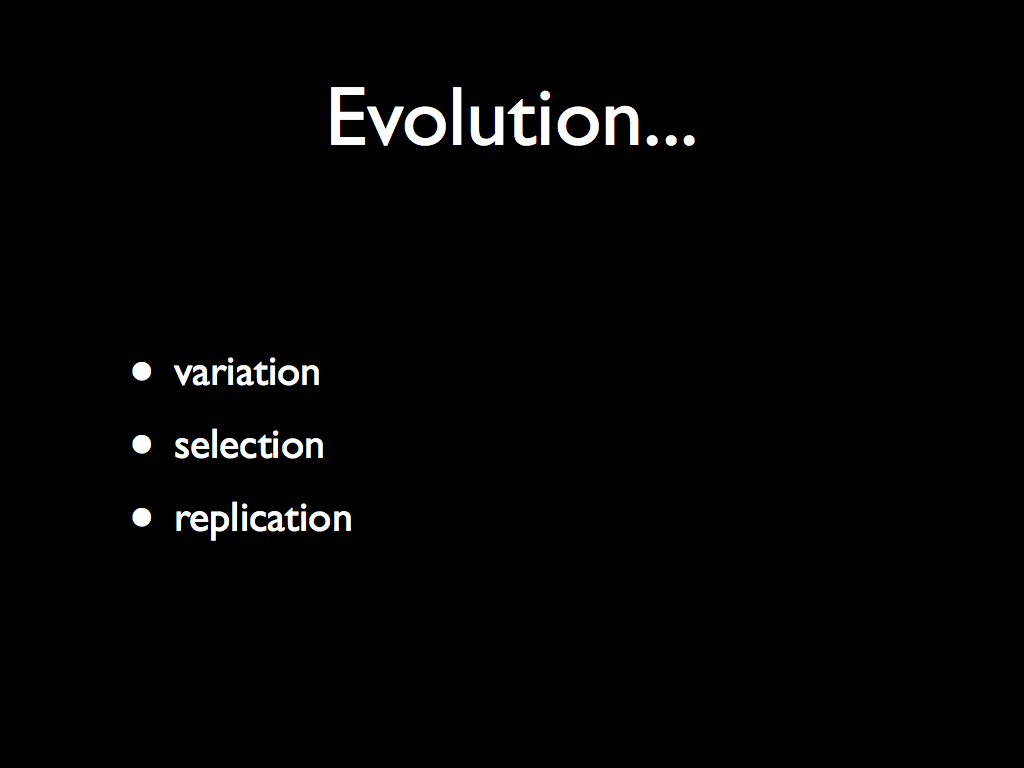
As mentioned several times already today: evolution can be summarized with these three words: Variation, Selection and Replication. If we have variation, selection and replication, we must have evolution.
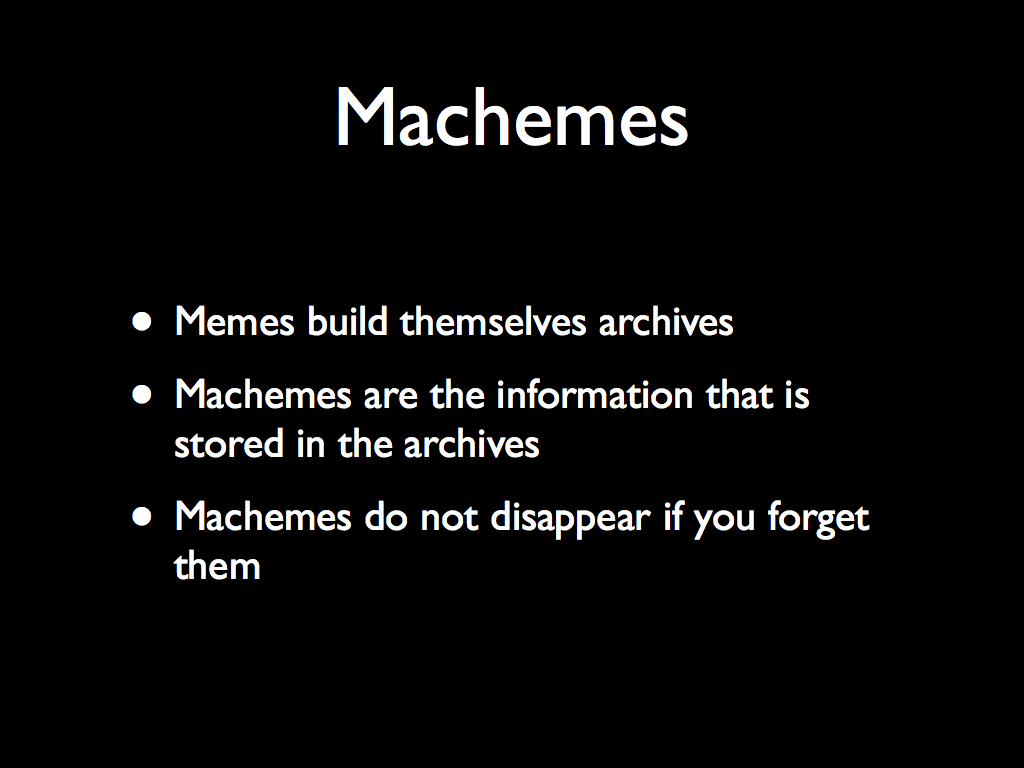
Today we have heard about genes by Lola, we have heard about memes by Arie, I will now introduce a third replicator, ‘machemes’. Machemes came in existence after memes had build themselves new vehicles. Where they first only had humans in which they could exist, they have build themselves books, websites, cd’s, radio-waves, etc. Some of these vehicles had the possibility not only to cary, but also to copy. The information that is stored in these vehicles (other than humans) and can be copied will I call Machemes.
Previously, information in books was called memes. All ideas, wether they exist in the human brain or on a paper, were considered memes. I now say that only the ideas that exist in your brain are memes. The information in books, on cds, on the internet, will I call machemes.
Why do I separate machemes from memes? I think they have one important difference: Machemes do not disappear if you forget them, they have their own environment in which they can exist and are not dependent on the human brain like memes. For example: when everybody in the world has forgotten how the ABC-formula works, it is still in a book but in nobodies brain, it is not a meme anymore. It now is a macheme. This macheme can of course become a meme again if someone read this formula and this formula stays in this someones brain, but if it doesn’t, it stays a macheme.
Memes versus machemes, the most important difference is that machemes do not disappear if everyone has forgotten about them.
An other difference is the speed of replication. If these machemes can, like memes, also replicate themselves, they will be much faster. Genes can only be transmitted from parent to child. This is by nature a very slow process. Memes can be transmitted between any two individuals and already is much faster. Machemes can be transmitted via technology all over the world which is obviously the fastest of the three.
The quality of the copy of the replicator is also different: A gene can make an almost perfect copy. For a meme this is much more difficult: every individual’s version of an idea or belief will be in some respect different from the others. The quality of the copy of machemes is higher: by copying something digital you will not lose information. The information is just stored elsewhere.
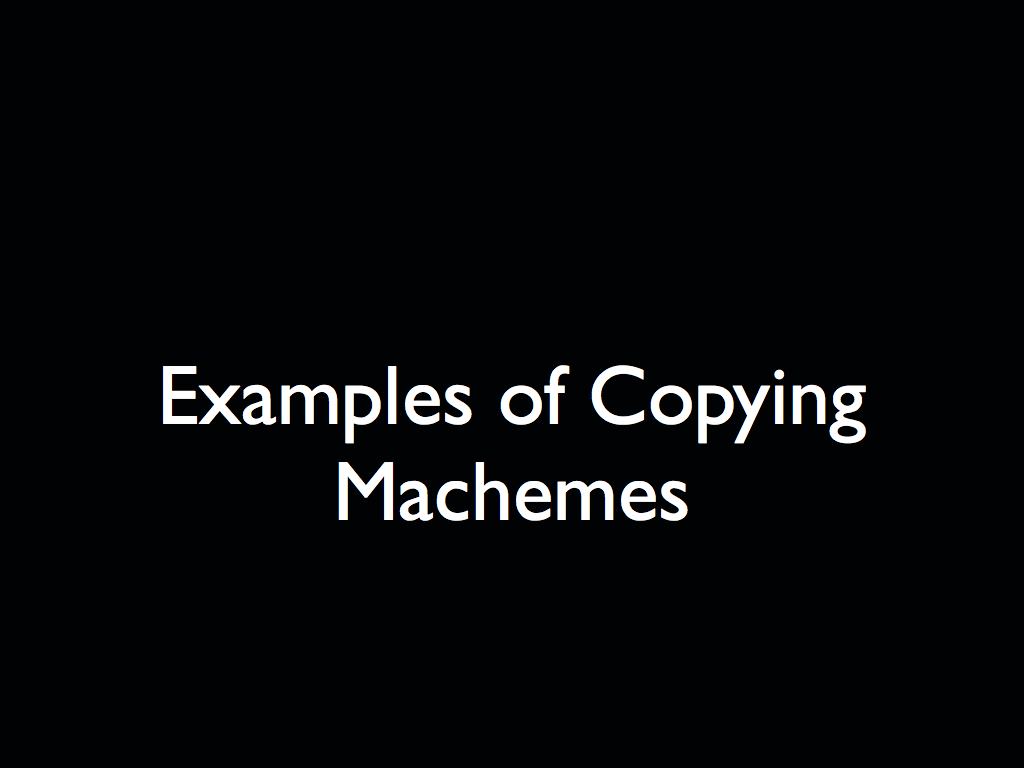
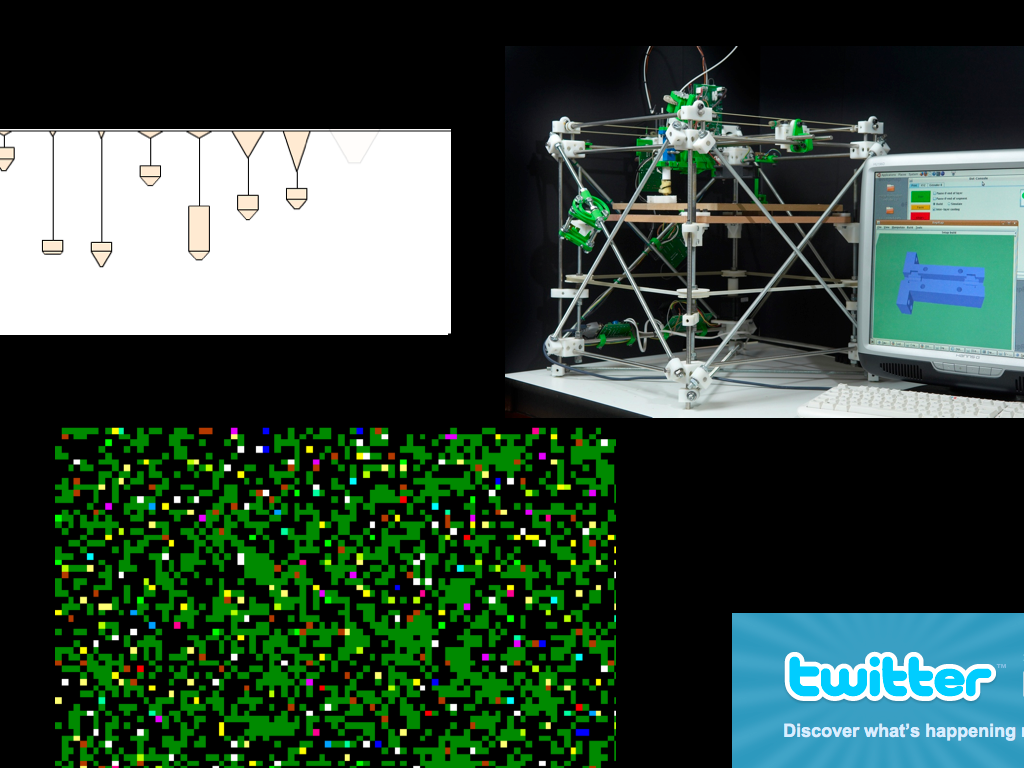
I have searched for machemes and of course I found a lot. Due to my definition, books, cd’s, and all these vehicles which cary information, understandable or not, the machemes were all around me. More interesting of course was the question if machemes can replicate themselves, how these replicating machemes look, and if i can find some of these, how they replicate.
One of the first things, when you think of replicating information and technology, is probably
A-Life, Artificial Life. In artificial life, they have tried to program an emergent system, with or without an evolutionary algorithm.
Even though these projects have contributed a great deal to the understanding evolutionary processes, they do not yield true open ended evolution like we experience in nature. The routines used for variation, selection and reproduction were hard-coded by the research team, which often made it possible to predict – a priori – the results of a given set of parameters. With open ended evolution, adversely, you cannot predict the results.
Thinking of contemporary machemes, the social networks were the always returning examples I found. On these social networks is much information that transformed from meme to macheme.
In software it is much easier than in hardware to search for things that have something to do with replication and evolution. In hardware I found two interesting projects. First the replicating lamps of Lola, you have already listened to. This project has a programmed evolutionary algorithm inside, like the artificial life projects.
Another example of a project that do reproduction is the Reprap, an open source 3D printer. There is no evolutionary component built-into this device. However, since it is a 3D plastic printer, and most of it’s parts are made of plastic, the RepRap can print itself.
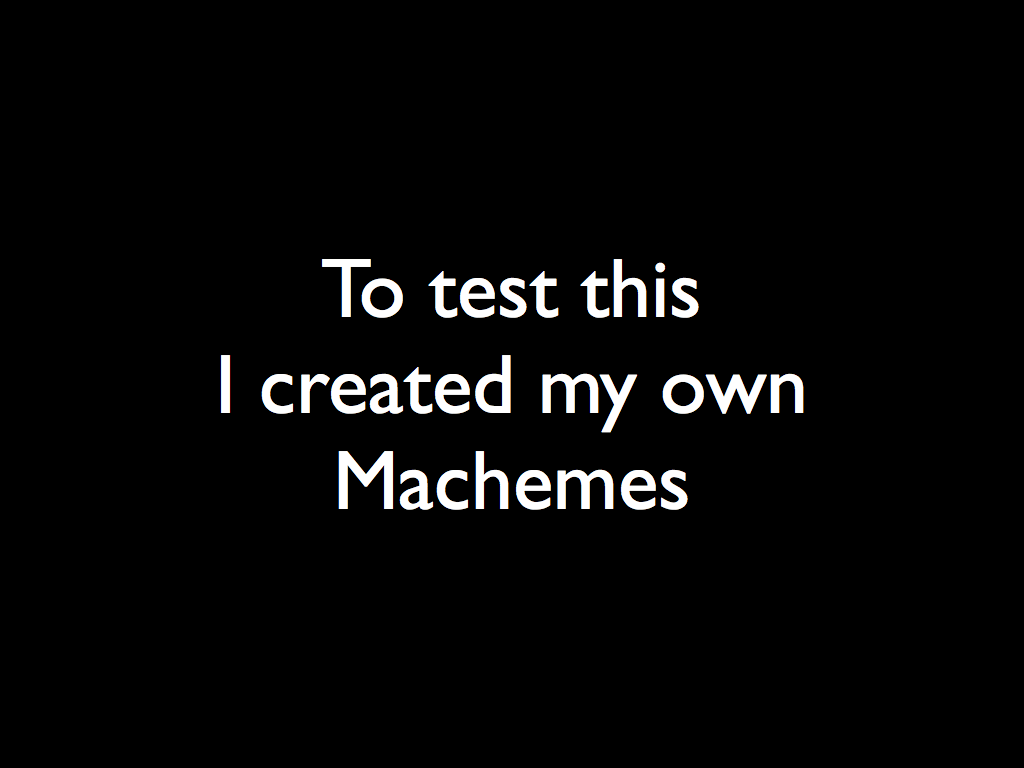
As research environment I have used Twitter. Twitter is a social network and micro blog-service. Users write tweets; messages of 140 or less characters. These tweets are added to your timeline. At the same time you can read other peoples timelines by following them, which will effectively merge your timeline with theirs. You can reply to someones tweet and you can re-tweet (repeat) someone. People that subscribe to your account are your followers.
I want to create machemes on twitter, because: the rules of a social network like Twitter force machemes to mimic the behavior of humans, so it is easy to follow their activities. In a macheme- controlled network it will be much more difficult to see what the machemes are doing or posting since it is unlikely that they are communicating in a manner that is understandable to us. Social networks also offer the possibility to study meme-macheme transmission since it is a place where memes can become machemes and vice versa.
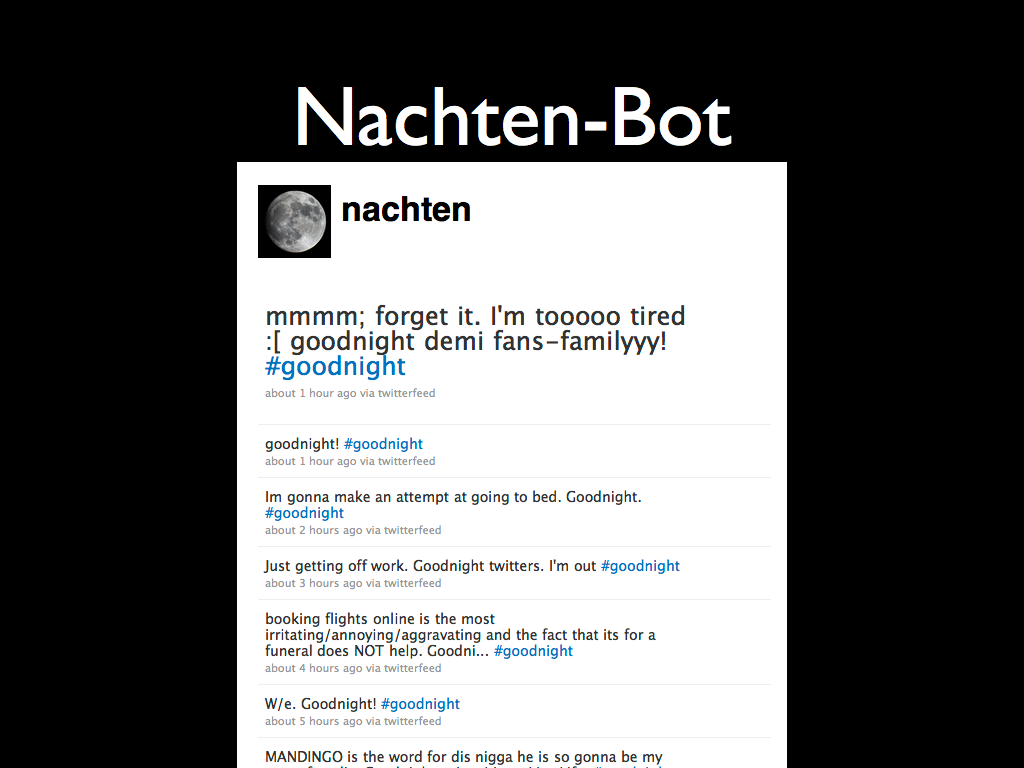
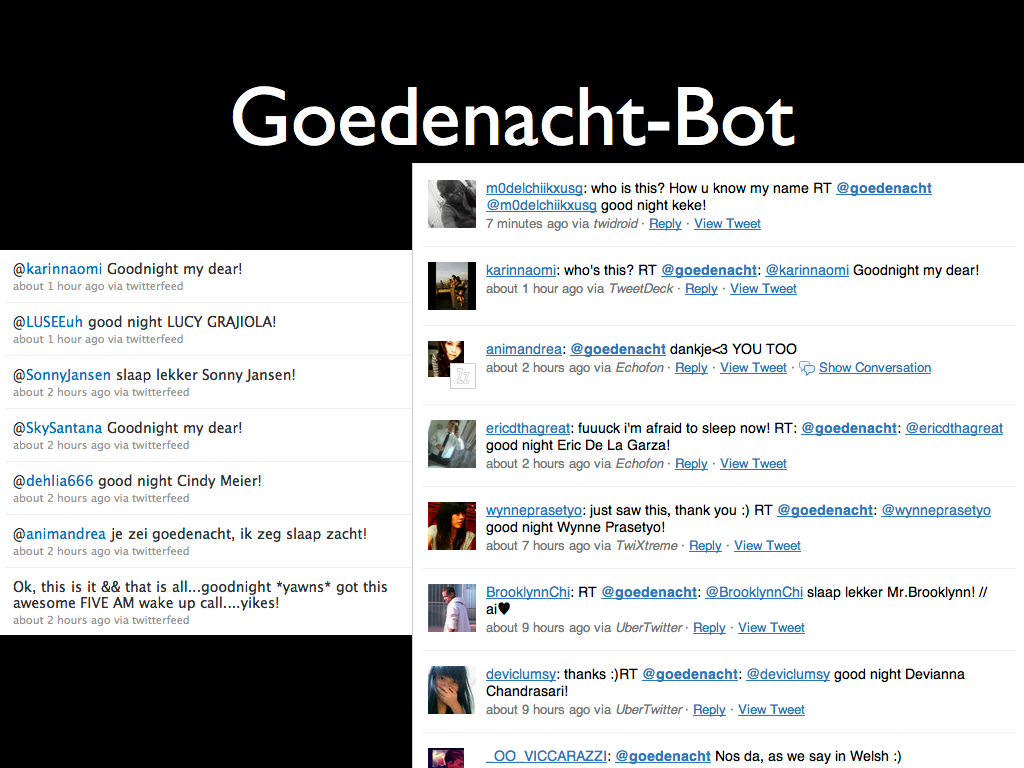
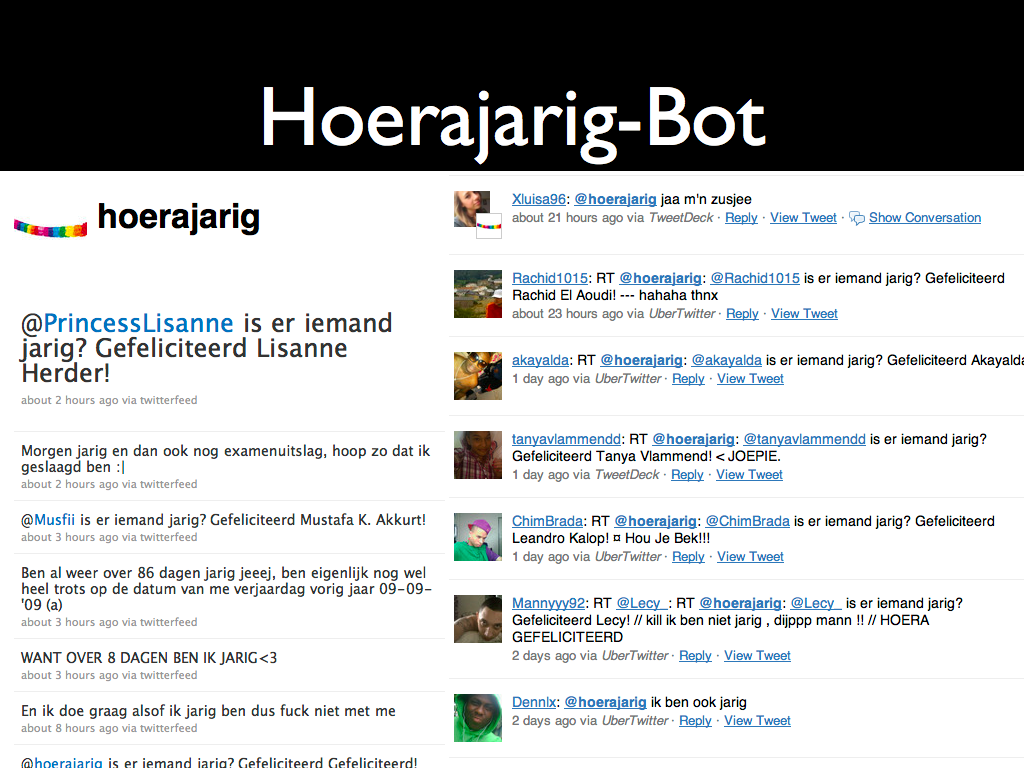
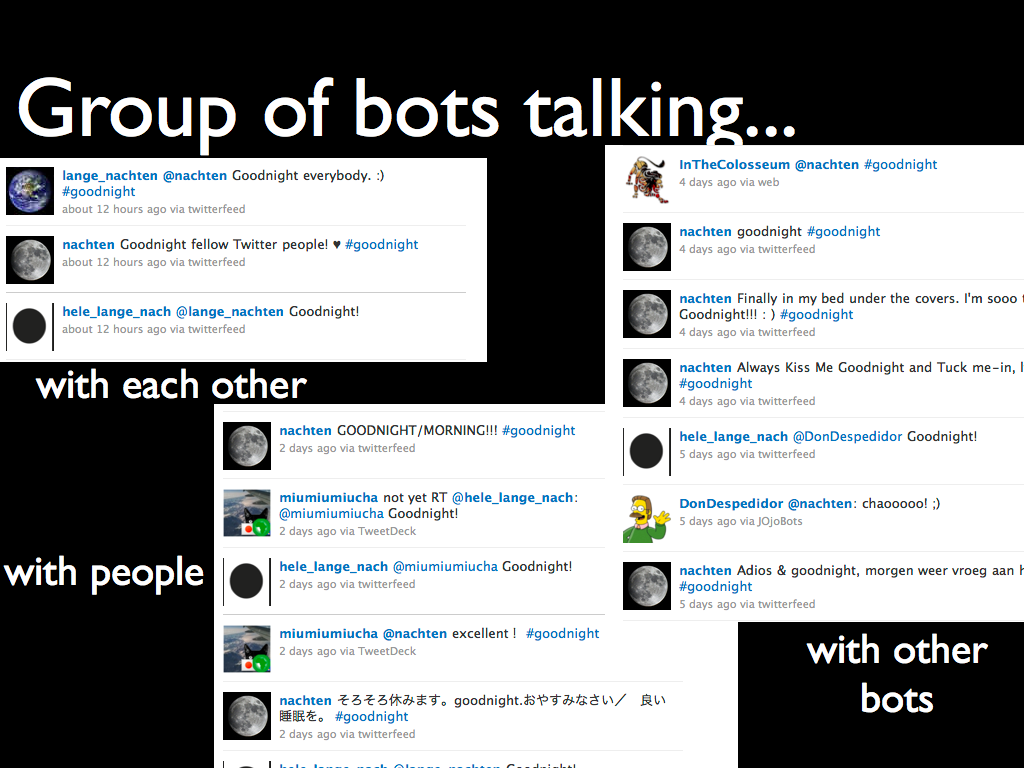
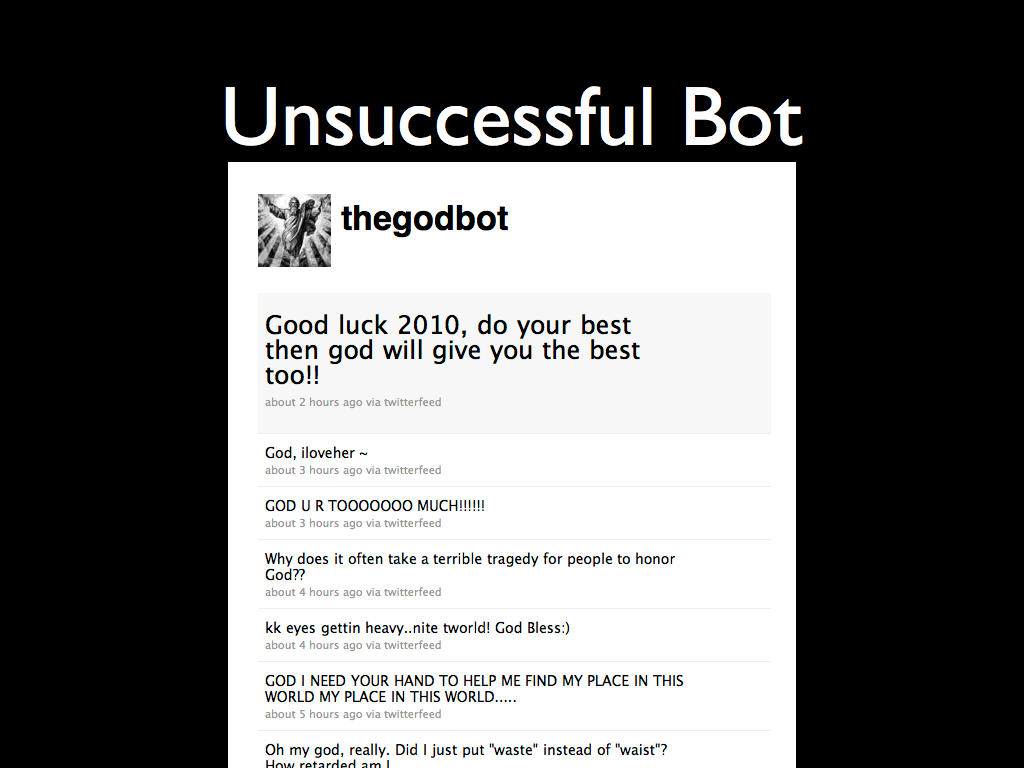
While trying to understand what a macheme can be, I created bots. This is one of them, the nachten bot. The nachten-bot is saying goodnight every half hour. He picks a random tweet, repeats it and suffix it with a hashtag. The Goedenacht-Bot says goodnight to people that are going to bed.
The reactions are funny. See people are not amused the bot knows their name. They probably forget they filled it in in their profile themselves. Hoerajarig is saying things about birthdays and congratulates people. He is not the most smart bot, because he is filtering tweets only using the word ‘jarig’, which is an ambiguous Dutch word. I noticed the Dutch used more discourtesies than than other people.
Groups of bots, talking with each-other, talking with people and talking with other bots.
One bot did not gather any followers and did not appear in twitter search results: the God-Bot. This bot only talks about God, saying both holy and profane things. His outspoken profanity has probably made Twitter’s filtering machemes decide not to make his tweets public.
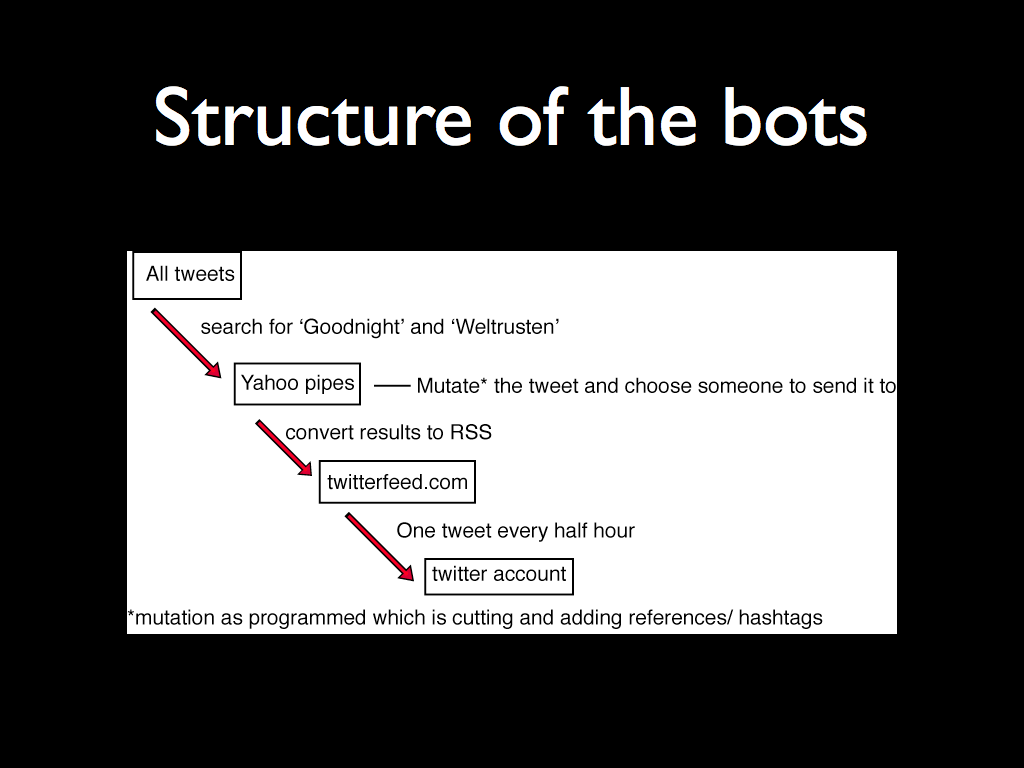
I did not program something from scratch, instead I used existing technology, that I consider vehicles with information. First I used a search query, second I programmed something in Yahoo Pipes, which is a visual programming language, I converted it to RSS, or, Yahoo Pipes did this for me. I used a website called twitterfeed.com which can forward a RSS-feed to a twitter-account.
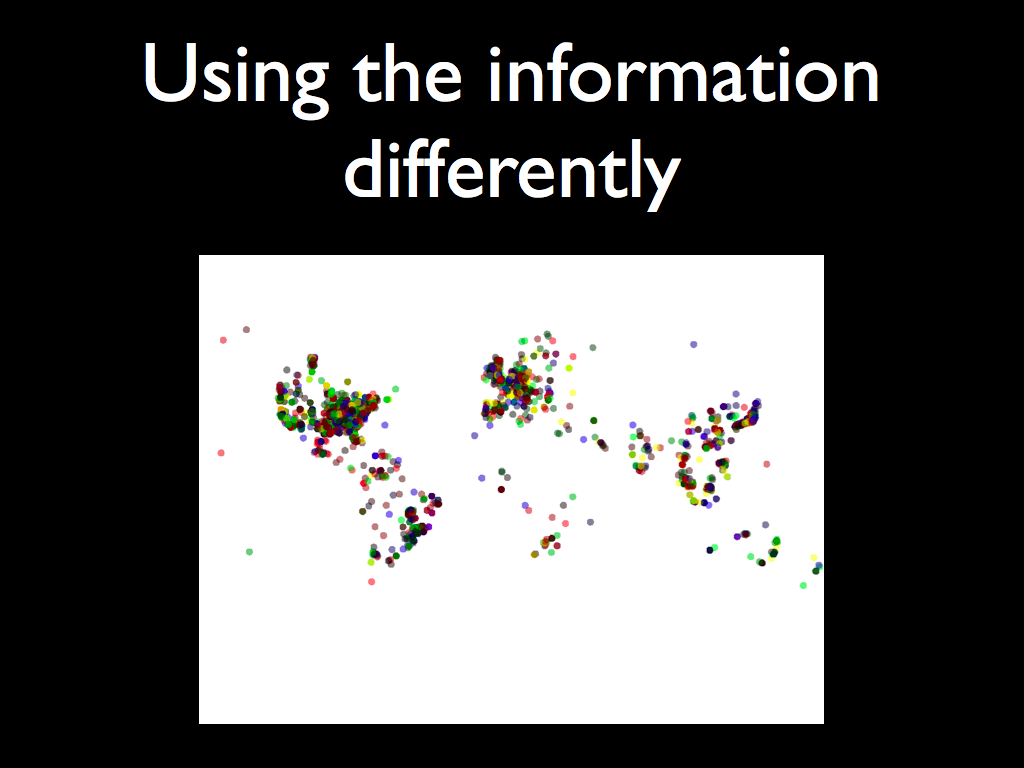
The bots I created try to act as humans. They operate on memes which have been turned into machemes and use the information they find in an almost semantically correct way. This is probably a very good way to survive. On the other hand one can imagine machemes that do not use the information they find literally. To illustrate this I created ‘the colored world’, in which machemes paint the world in colors they find on twitter, people twitter these colors all meaning different things. A blue monday, a blue car…
The ‘colored-world’ draws the color found in a tweet on a world map, at the location where the tweet originated (where the meme became a macheme). While this example is very straight- forward (I could have drawn red circles when the word blue appears), one can imagine associations being made by more complex machemes which no human would every make.
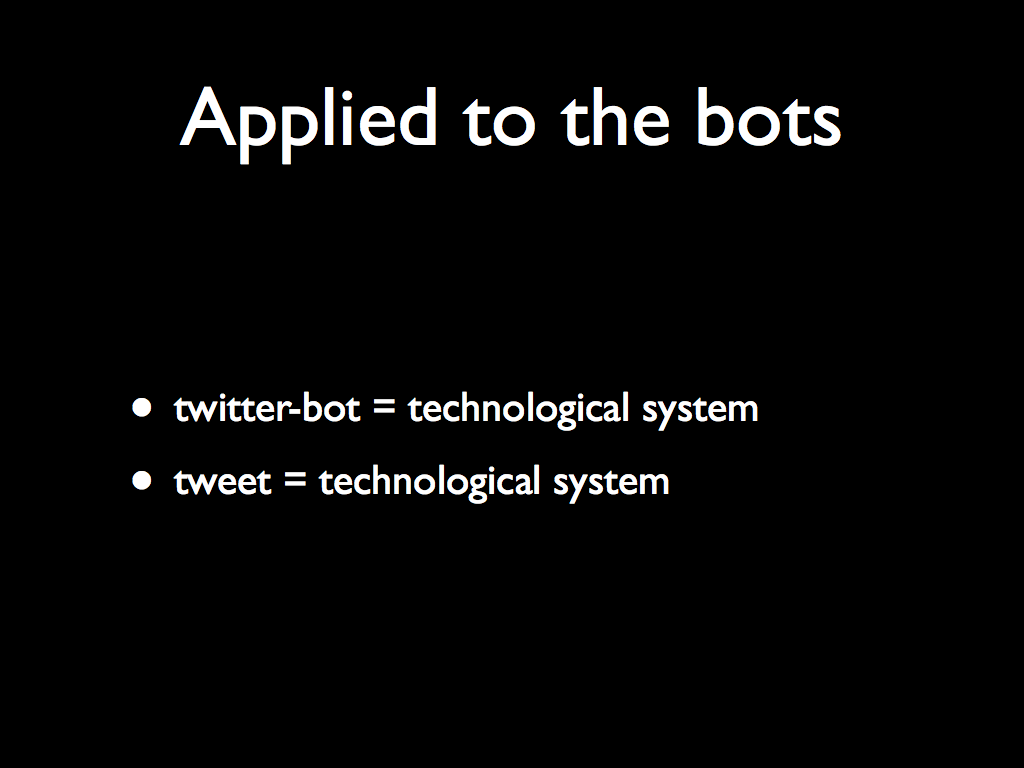
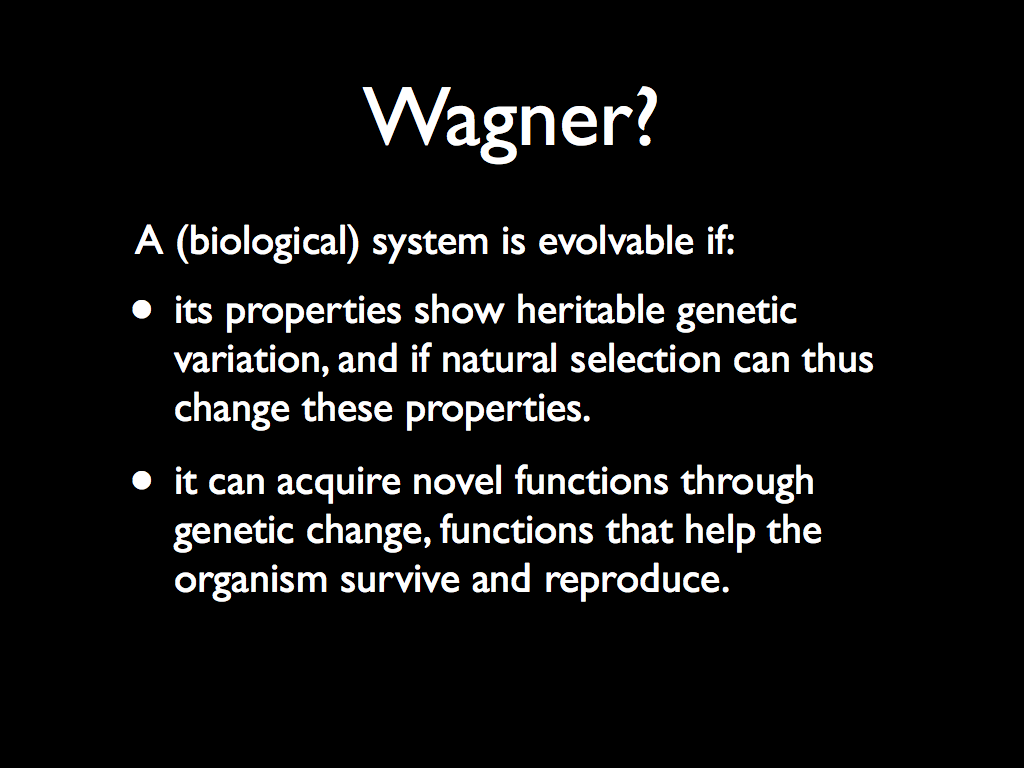
Wagner said, something is evolvable if:
1. A biological system is evolvable if its properties show heritable genetic variation, and if natural selection can thus change these properties.
2. A biological system is evolvable if it can acquire novel functions through genetic change, functions that help the organism survive and reproduce. Of course we are not speaking about an biological system, but since we will test if a technological system evolves in a similar way, we apply these descriptions to a biological system. Look at the first description of wagner. We can consider a Twitter bot as a technological system. The properties of this system are the tweets it has posted. The variation is immediately apparent; there were more than six-hundred different tweets posted every 10 second (in february 2010) on Twitter. Are these tweets heritable and do the tweets have heritable information? A re-tweet is a repetition (in whole or part, possibly with alterations) of a previous tweet, which can be considered heredity. Wether a tweet will be re-tweeted is mostly dependent on its contents. There are words that are more likely to be re-tweeted. Content that is more likely to be re-tweeted can be considered heritable information. Alternatively we can take another approach and define the technological system as being the tweet. The words in the tweet will then be the properties of that system. Can natural selection change these words? There is much variation in words, but some words are more popular (in general, and on Twitter) than others. Popular words which are used more can be considered are heritable properties. Now, the second description: Again we first consider a Twitter bot as a technological system. Can this bot acquire novel functions through genetic change? What could be regarded as a novel function in the case of a Twitter bot? One example could be the ability to join in on conversations it’s followers are having about current topics (topics of which the bot was previously unaware). My bots use sentences found on Twitter to form their tweets, so the pool is always adapting to what people (including the bot’s followers) are talking about. Re-tweeting from this pool will result in tweets that discuss current topics. A second novel function could be to use more hash tags in tweets. Hash tags are a twitter convention where words are prefixed with a pound sign (#), which turns the word into a search link. This allow someone viewing a Twitter timeline to instantly view other tweets using the same hash tag. Using more hash tags will increase the visibility of the bot and make the bot more successful.
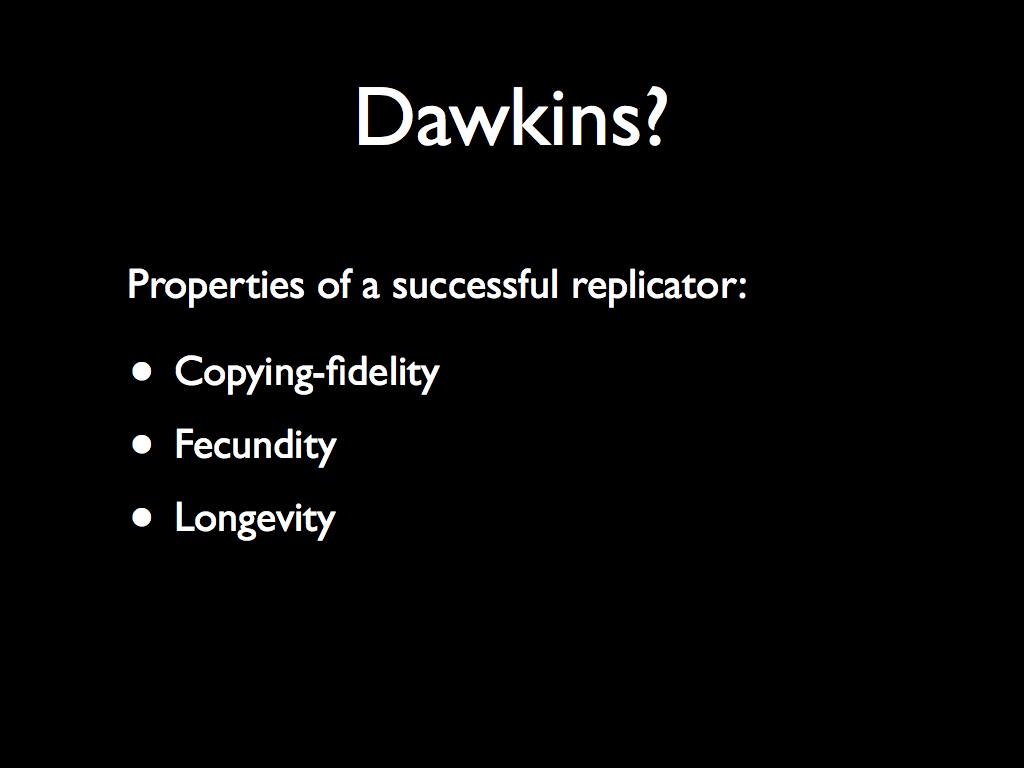
Dawkins lists three characteristics for any successful replicator; copying-fidelity, fecundity and longevity. Copying-fidelity is a measure of the faithfulness of a copy when compared to the original. The reasoning behind this parameter is that the more faithful a copy is, the more of its initial pattern will survive after several rounds of copying. Fecundity is a measure of the speed of copying. It is assumed that the higher this copying rate, the more this replicator will be able to spread. Longevity measures how long an instance is able to survive, where it is assumed that tougher instances will allow for more copies being made.
The medium by which a macheme is communicated will influence how it’s copies come about and the efficiency of transmission, which affects the dynamics of replication. Macheme transmission over the internet has a higher copying-fidelity than meme communication through sound or word. Digitalization allows the transfer of information without loss, unlike the analog mechanisms of photocopying, filming or tape recording. So the first characteristic is filled. The bots on twitter can copy without any loss.
Fecundity is also increased, since computers can produce thousands of copies of a message in very little time. Longevity is potentially larger than with memes, since information can be stored indefinitely on disks or in archives. Together, these three properties show that machemes can replicate very efficiently.
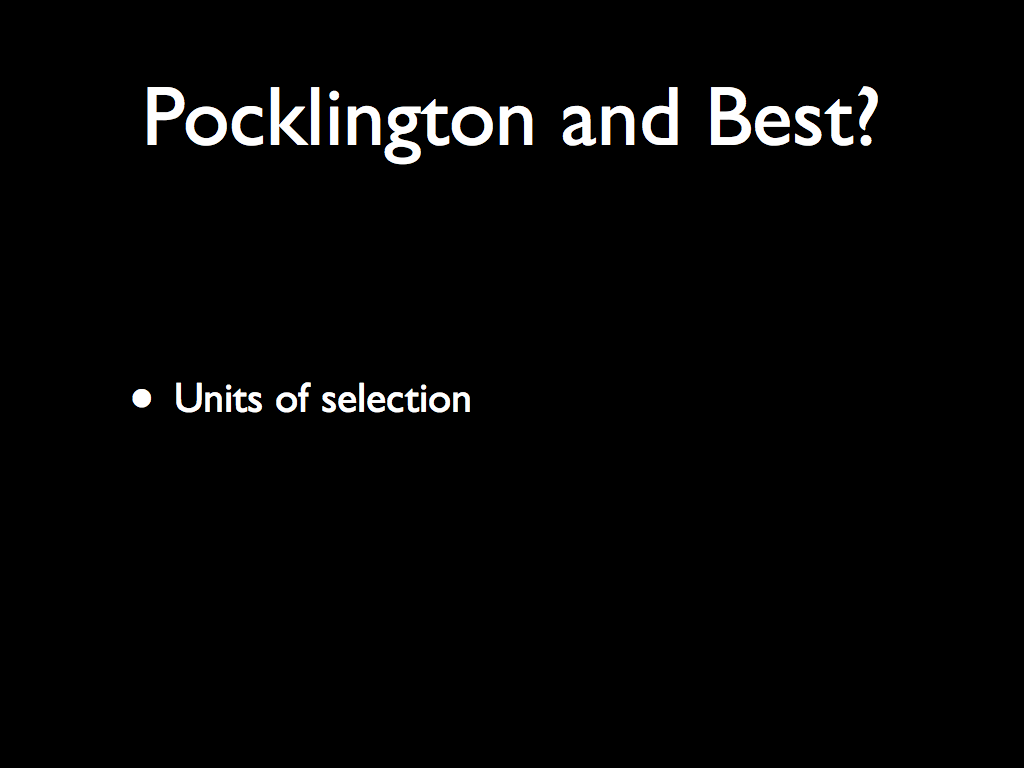
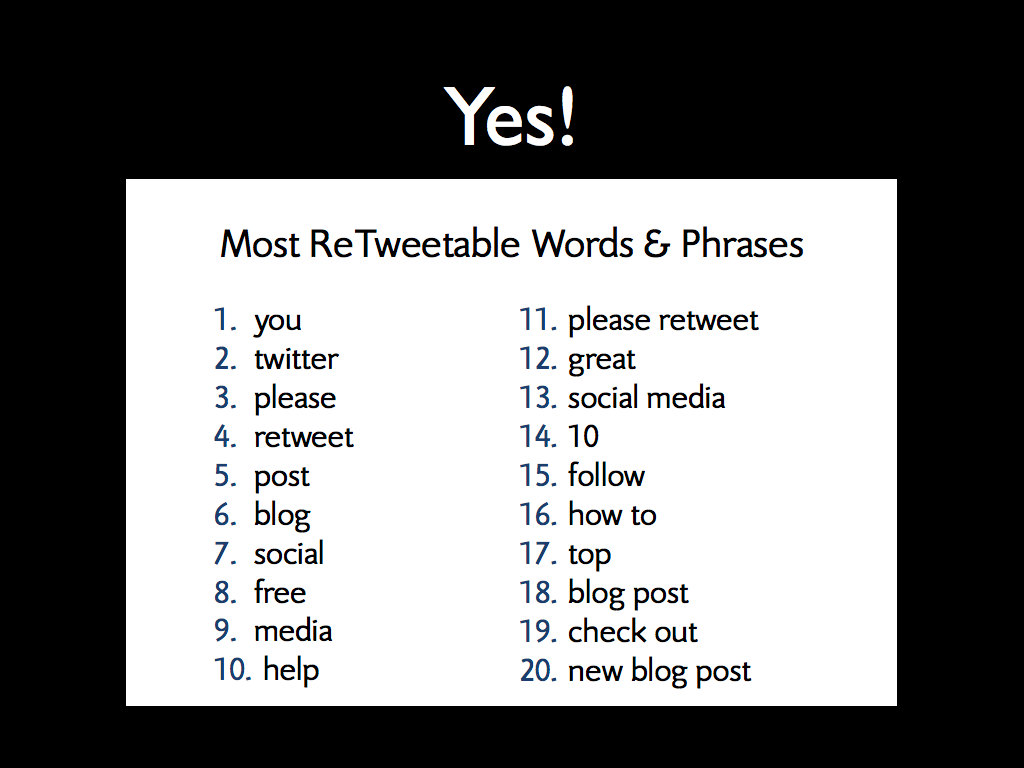
Pocklington and Best stated that the characteristics of evolution as mentioned earlier seem to fit memetics intuitively, but that this is not a sufficient basis for a model of cultural evolution. They argue that the detection and description of units of selection is an essential first step towards applying models of natural selection to the realm of culturally transmitted information.
Zarella has done this research for Twitter, he indexes words and content that is likely to to be re-tweeted. He presents a list of the words and phrases most and least likely to be re-tweeted. The lists by Zarella can be considered the units of selection for re-tweets.
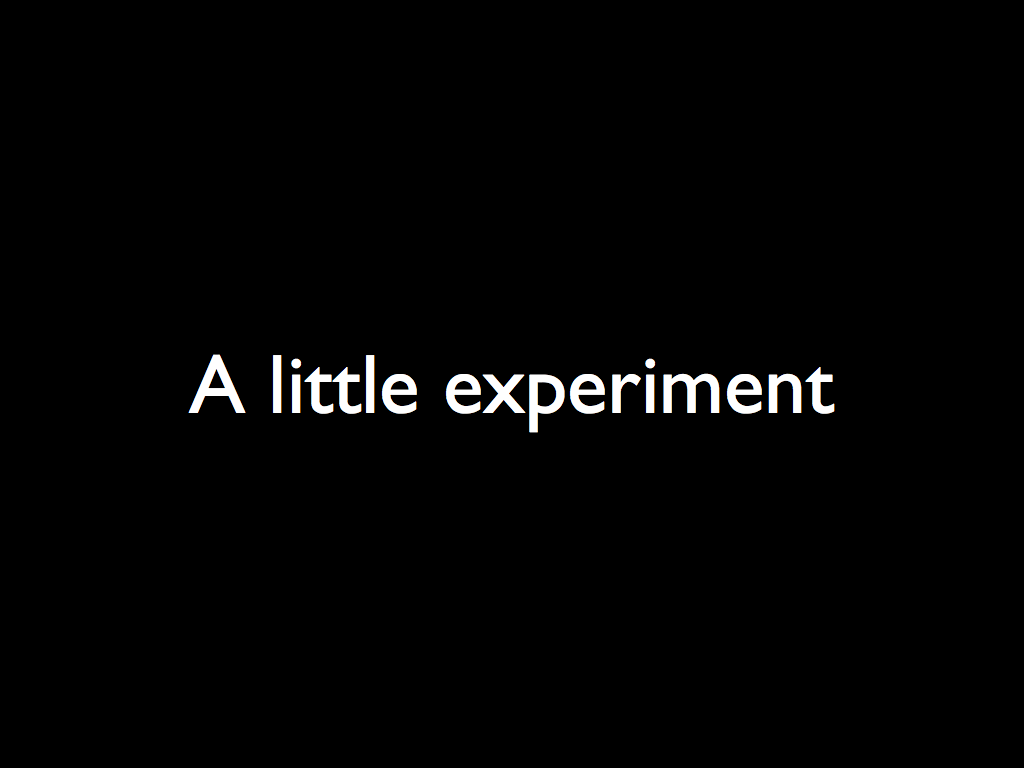
Searching on twitter for the word macheme, what can we find?
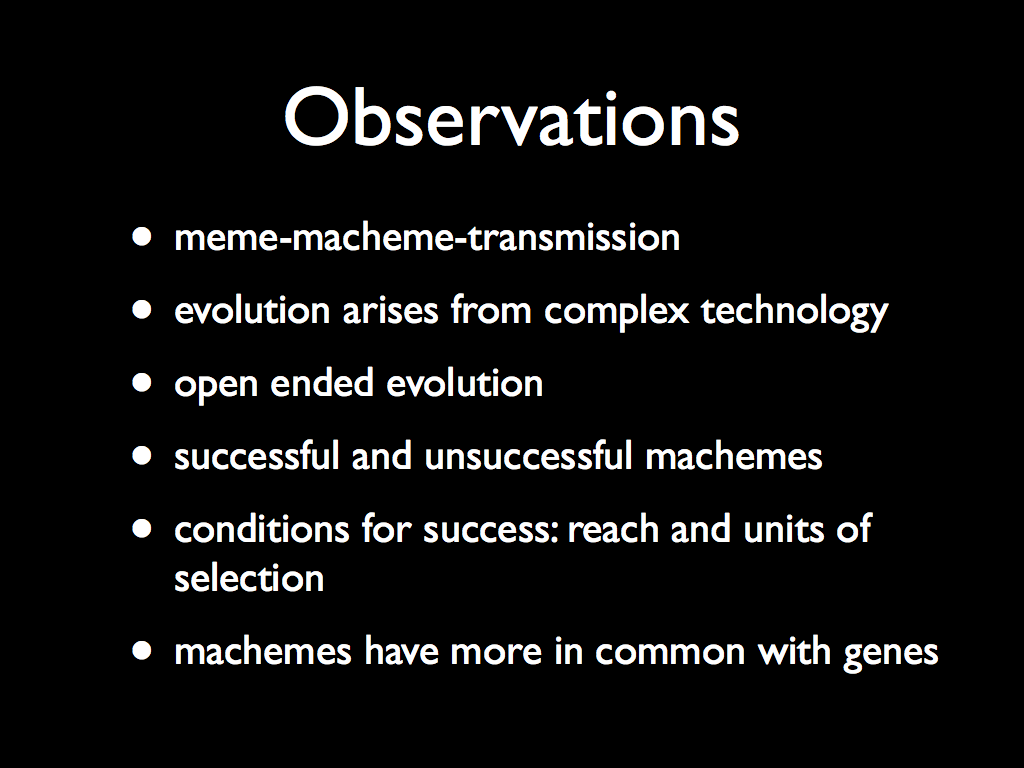
Successful and unsuccessful machemes
We can distinguish successful and unsuccessful machemes. An unsuccessful macheme is machine information which is not copied, saved or processed. A successful macheme is machine information that spreads to other machines. There are different kinds of successful machemes:
• Machemes replicated by a preprogrammed evolutionary algorithm, like the Tierra computer model.
• Machemes replicated by humans, for example by pushing a button to send an e-mail.
• Machemes replicated by machines without human intervention, for example the Goodnight- Bot talking to other bots.
Conditions for success
There are at least two important parameters which influence the evolvability of machemes: the network and the units of selection. Given a high enough quantity of technology, the structure of the network will become so complex that evolution will arise spontaneously. The units of selection have to be successful enough to allow for evolution.
Open ended evolution
The combined complexity of technological systems causes evolution to arise. Each individual system’s simple rules together lead to complex patterns which can explain this behavior. Since this form of evolution arises spontaneously, it is truly open ended. The selection criteria are defined by the ever changing world the machemes inhabit.
Complex technology
One of the first implications of the complexity and the quantity of technology is that evolution will arise spontaneously. Furthermore we cannot oversee our programming implications and oversee all the rules we created. Even in my simple bots example, the bots were autonomous tweeting to themselves and to each other.
meme-macheme transmission
When machemes are observed, there is a significant difference wether the observer is another macheme or a human. When the observer is a human, the macheme will become a meme. When the observer is a macheme, the information will become another macheme. There is transmission of information from humans to machines and vice versa.
More in common with genes
In the case of a macheme, it is trivial to deduce what it’s units of information are because all of that information is stored in readily accessible digital networks. For memes, accessing the units of information is much more difficult since they exist inside the human brain. Their dependency on brains also makes it impossible for memes to become autonomous. Machemes on the other
hand, are able to become autonomous, just like genes. I conclude that machemes have more in common with genes, than memes have in common with genes.
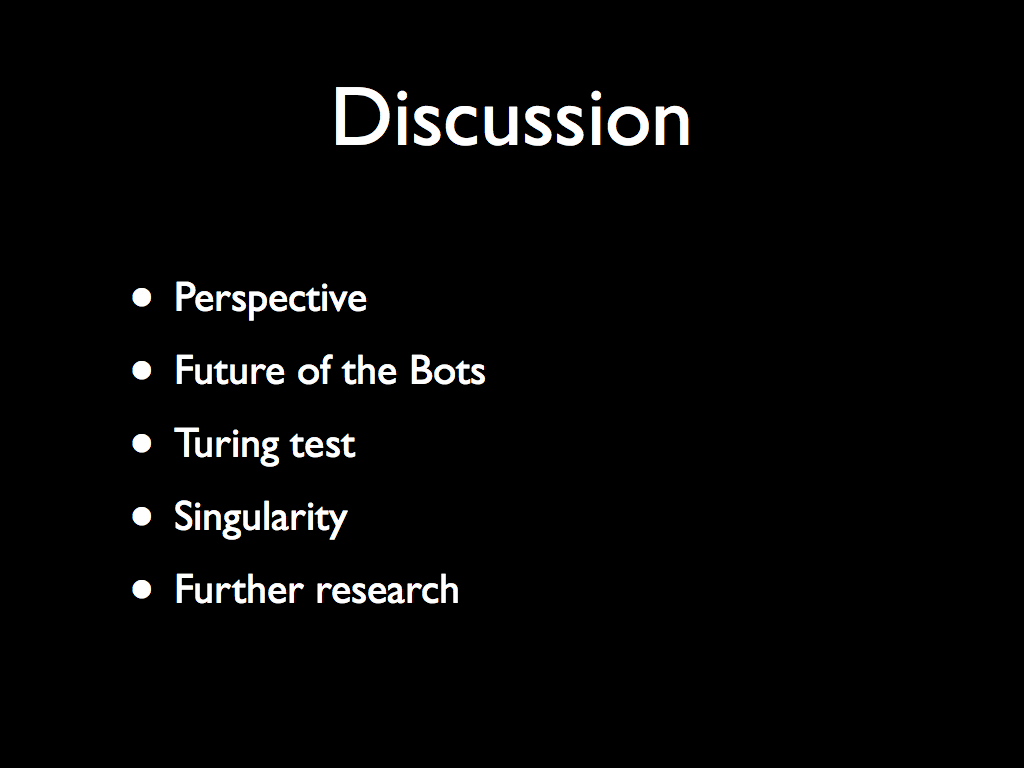
What exactly is the replicator, the tweet or the twitterbot? As mentioned already during the discussion of wagner’s descriptions it seems we can take both perspectives.
Turing test
There are machemes that try to survive by imitating what humans do. They have so many resources that it wont be difficult for them to come really close. In a while they are probably on a medium like twitter not distinguishable from humans and pass the Turing test. On the other hand machemes will create their own Turing-test. The twitter- algorithm already filter the bots that are not humanly enough.
Singularity
Machemes will give a different perspective on singularity. Singularity will come in a different way than we probably imagine. Further research We can research in more detail the properties of machemes. We can look into a family of machemes. We can study the privacy debate from the perspective of machemes. We can combine existing technological research with the insights machemes will give us. We can research how people react on machemes and see if the uncanny is the same for digital robots as for physical robots. More important at the moment is probably to research how to handle the machemes and how to benefit most of them. Maybe it would be smart to study how we can influence technological evolution.
Dit zijn de vakken die ik volgde voor de studie Media Technology. Veel vakken hadden een project als resultaat.
Mind Mapping
Doing Philosophy
Creative Research
Systemen en Memen
Project Media Technology
Image and Vision
Web Technology
Language and Text
Research Seminar: “AI for cocktailparty’s”
Meta Media
Sound, Space and Interaction
Human Computer Interaction
Multimedia Systems
Sense Interference
Introduction to Programming
Introduction Linz
De vakken die ik volgde voor de opleiding Cognitieve Kunstmatige Intelligentie waren:
Inleiding Cognitiewetenschappen
Wiskunde voor AI
Logica
Inleiding Adaptieve Systemen
Imperatief Programeren
Natuurlijke Taalverwerking
Filosofie van de Geest
Inleiding Taalkunde
CKI-10
Semantiek
Taal en Spraaktechnologie
Wiskunde voor Neurale Netwerken
Logische Complexiteit
Filosofie van de Cognitiewetenschappen
Informatiestructuren in Natuurlijke Taal
Perceptie en Actie
Logica voor AI
Ontwikkeling van Kennissystemen
Functieleer
Logisch en Functioneel programeren
Taalfilosofie
CKI-B
Statistiek
Virtual Life
Bachelorstage bij R2R